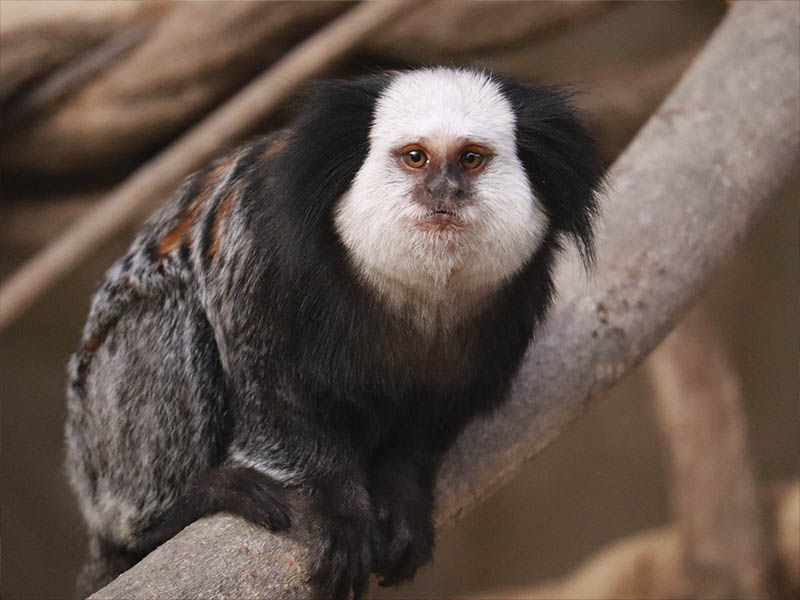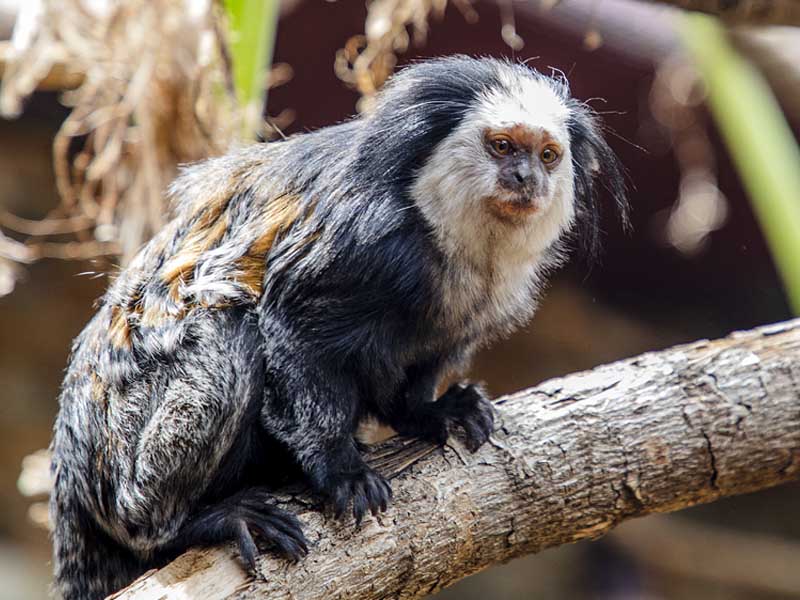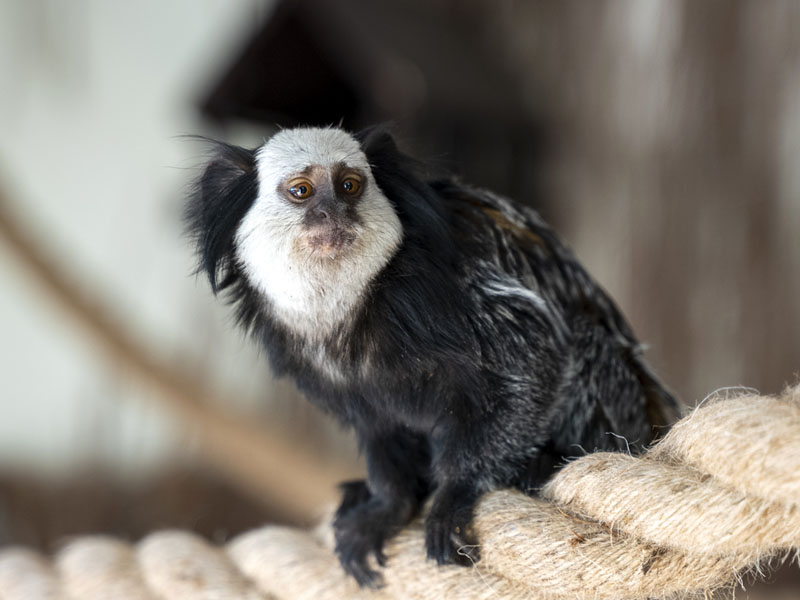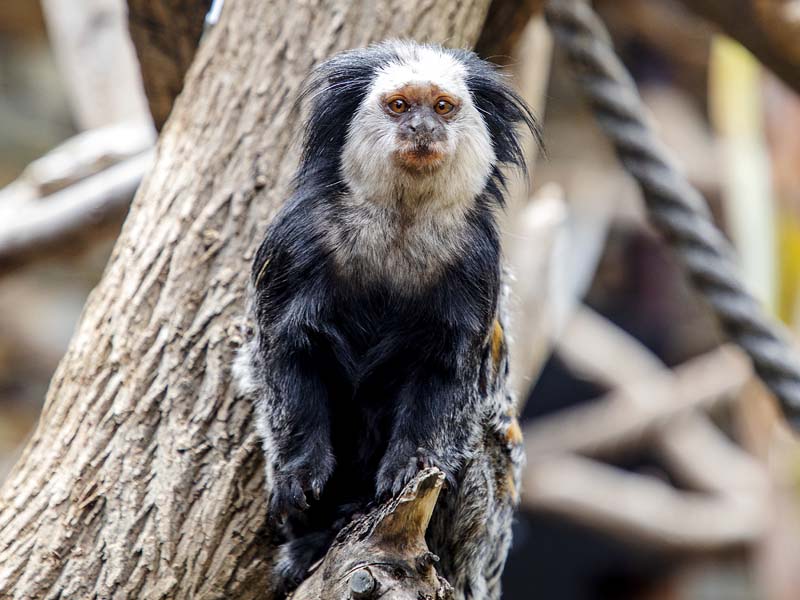



Geoffroy's tufted-ear marmoset




















The Geoffroy's tamarin (Callithrix geoffroyi), also called tufted-ear, white-faced, white-fronted or white headed marmoset is a small primate found only in the forests of southeastern Brazil, specifically in the states of Minas Gerais and Espírito Santo, and is endemic to a neotropical ecosystem known as the Atlantic forest, one of the most endangered biomes on the planet. In addition, a feral wild population exists on the island of Santa Catarina. Although it is restricted to these specific areas, there are quite a few individuals left in the wild, so it is not threatened with extinction, although it shares the threat of the rapid deforestation of the Amazon rainforest common to all marmosets.
It is characterised by a dark coat, with long black tufts on the ears, while its forehead, cheeks and lower face are white. On the back of the body there are tufts of orange and grey fur, alternating with black and white bands. It also has a ringed tail with grey lines on its black coat, which is practically the same length as its body, reaching a total of 50 centimetres.
With diurnal and arboreal habits, the white-faced tamarin lives in small family groups of between three and eight members that defend territories whose extension depends mainly on the availability and distribution of food, and can reach several hectares. These territories are defended by aggressive displays and scent marks by all members of the group in the presence of other conspecifics. They feed mainly on insects and fruits, but their omnivorous diet includes flowers and their nectar, sap, resin, fungi, invertebrates, snails and small vertebrates such as amphibians and lizards.